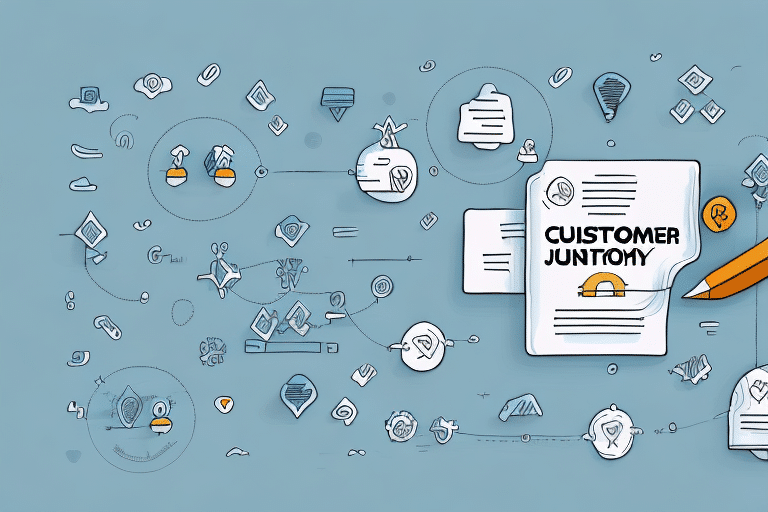Strategies for Customer Retention and Development
Customer retention and development are pivotal for any business aiming for long-term success and sustainable growth. Retaining loyal customers and continuously developing new ones not only boosts revenue but also enhances brand reputation and overall business performance. This article delves into effective strategies and best practices that businesses should adopt to prioritize customer retention and development in their growth plans.
The Importance of Customer Retention and Development
Customer retention and development are fundamental for businesses to maintain a steady customer base while also attracting new clientele. According to a study by Harvard Business Review, increasing customer retention rates by just 5% can lead to an increase in profits of 25% to 95%. Satisfied customers are more likely to recommend your business to others, fostering organic growth and reducing the costs associated with acquiring new customers.
Moreover, loyal customers provide valuable feedback, offering insights into their needs, preferences, and pain points. This feedback is instrumental in refining products or services, enhancing the overall customer experience, and staying ahead of competitors. Additionally, loyal customers often become brand advocates, boosting brand awareness and credibility through positive word-of-mouth both online and offline.
Understanding Your Customer's Needs and Expectations
The foundation of an effective customer retention strategy lies in a deep understanding of your customers' needs and expectations. Gathering customer feedback through surveys, reviews, and social media interactions is essential in identifying what customers value most and where improvements are needed. Tools like SurveyMonkey and Qualtrics can facilitate this process by providing comprehensive platforms for collecting and analyzing customer feedback.
Analyzing customer behavior and purchase patterns is another critical aspect. By leveraging data analytics, businesses can identify popular products or services, effective promotions, and preferred communication channels. This data-driven approach allows for the customization of marketing and sales strategies to better align with customer preferences, thereby increasing satisfaction and loyalty.
Measuring Customer Satisfaction and Loyalty
Accurately measuring customer satisfaction and loyalty is vital for identifying areas of improvement and shaping retention strategies. Common tools for this purpose include surveys, customer reviews, and the Net Promoter Score (NPS). NPS, for instance, gauges the likelihood of customers recommending your business to others, providing a clear metric of overall satisfaction.
Additionally, actively seeking customer feedback through various channels such as social media, email, or direct calls can offer nuanced insights into customer experiences. Monitoring and analyzing this feedback helps in promptly addressing any issues and enhancing the customer journey. Tracking customer retention rates over specific periods also aids in identifying trends and adjusting strategies to improve loyalty.
Effective Strategies for Customer Retention
Personalization
Personalization is key to building strong, lasting relationships with customers. Tailoring products, services, and marketing efforts to individual customer preferences makes them feel valued and understood. This can include customized recommendations, personalized promotions, and individualized communication. According to a report by Forbes, personalized experiences can significantly enhance customer satisfaction and loyalty.
Effective Communication
Maintaining regular and meaningful communication with customers fosters trust and strengthens relationships. Utilizing channels like email newsletters, social media, and direct messaging keeps customers informed about new developments, promotions, and relevant news. Moreover, effective communication involves actively listening to customer feedback and addressing any concerns promptly, demonstrating that their opinions are valued.
Creating a Seamless Customer Experience
A seamless customer experience across all touchpoints is essential for retention. This involves ensuring consistency in interactions, whether online or offline. Implementing a robust customer relationship management (CRM) system can help track customer interactions and preferences, enabling personalized experiences and smooth transactions. According to a study by Salesforce, 80% of customers consider the experience a company provides as important as its products or services.
Leveraging Technology
Modern technology offers numerous tools to enhance customer retention efforts. CRM software, such as Salesforce CRM or HubSpot CRM, enables businesses to manage customer data, track interactions, and execute personalized marketing campaigns. Additionally, technologies like chatbots and email automation streamline communication, providing timely and efficient responses to customer inquiries.
Developing a Customer Loyalty Program
A well-designed customer loyalty program incentivizes repeat business and fosters long-term loyalty. Effective programs offer rewards that are meaningful and valuable to customers, such as discounts, exclusive access to products, or special offers. According to Bain & Company, increasing customer retention rates by 5% can boost profits by 25% to 95%. Ensuring that the loyalty program is easy to understand and participate in is crucial for its success.
Avoiding Common Mistakes in Customer Retention
While implementing customer retention strategies, it's important to avoid common pitfalls that can undermine efforts. These mistakes include:
- Inconsistent Communication: Failing to maintain regular contact with customers can lead to disengagement.
- Lack of Personalization: Generic interactions can make customers feel undervalued.
- Ignoring Negative Feedback: Not addressing customer complaints can damage trust and loyalty.
- Failure to Measure Effectiveness: Without tracking key metrics, it's challenging to assess and improve retention strategies.
By being aware of these common mistakes, businesses can proactively address them and enhance the effectiveness of their retention and development strategies.
Advanced Techniques for Enhancing Customer Retention
Engaging with Customers Online
Building a strong online presence is crucial in today’s digital age. Engaging with customers through social media platforms, online forums, and interactive content fosters a sense of community and connection. Best practices include maintaining a friendly and professional tone, responding promptly to inquiries, and actively addressing negative comments with empathy and solutions.
Handling Unhappy Customers
Dealing with unhappy customers effectively can turn negative experiences into opportunities for loyalty. Key steps include:
- Respond Promptly: Address complaints quickly to prevent escalation.
- Listen Actively: Understand the root cause of dissatisfaction.
- Offer Solutions: Provide fair and reasonable resolutions to rectify issues.
- Follow Up: Ensure that the solution was satisfactory and reinforce the commitment to customer satisfaction.
According to Forbes, effectively handling customer complaints can significantly enhance customer loyalty and advocacy.
Using Data Analytics
Data analytics provides valuable insights into customer behavior and preferences, enabling businesses to refine their retention strategies. By analyzing data on customer interactions, purchase history, and feedback, businesses can identify trends, predict churn, and tailor their offerings to better meet customer needs. Tools like Tableau and Microsoft Power BI are widely used for such analytics.
Employee Engagement
Engaged employees are more likely to deliver exceptional customer service, positively influencing customer experiences and loyalty. Investing in employee training, fostering a positive work environment, and encouraging employee feedback are effective ways to enhance engagement. According to a study by Gallup, highly engaged teams show 21% greater profitability.
Measuring the ROI of Retention Efforts
Assessing the return on investment (ROI) for customer retention and development initiatives is essential to determine their effectiveness and guide future strategies. Key metrics include:
- Customer Lifetime Value (CLV): The total revenue a business can expect from a single customer account over time.
- Customer Acquisition Cost (CAC): The cost associated with acquiring a new customer.
- Repeat Purchase Rate: The percentage of customers who make multiple purchases over a given period.
- Net Promoter Score (NPS): A metric that measures the likelihood of customers recommending your business to others.
By regularly tracking these metrics, businesses can evaluate the effectiveness of their retention strategies, allocate resources efficiently, and make informed decisions to enhance customer loyalty and business growth.
In conclusion, implementing effective customer retention and development strategies is crucial for any business striving for long-term success. By understanding customer needs, measuring satisfaction, personalizing interactions, leveraging technology, and avoiding common pitfalls, businesses can build strong, lasting relationships with their customers, leading to increased revenue, enhanced brand reputation, and sustained growth.




















